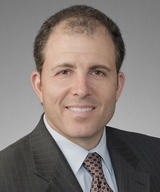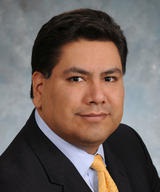2014 Year-End Energy Briefing
The Editor presents a summary of an energy briefing hosted by Akin Gump Strauss Hauer & Feld LLP, held on December 10, 2014, and featuring energy industry updates along 5 topics from 12 members of the firm’s Global Energy and Transaction team. Moderating the briefing was Rick L. Burdick, Partner and Chair of the firm’s Global Energy and Transactions group and also Managing Partner for the firm’s international offices. In representing companies and investors across the energy sector for more than 30 years, Mr. Burdick has played a leading role in some of the industry’s most cutting-edge domestic and cross-border transactions throughout the United States, the Middle East, Russia, Central Europe and China.
The Future of the Wind Industry
Burdick: Our first presenter is Ed Zaelke, a partner and co-chair of the Global Project Finance practice, who will lead a discussion about the future of wind energy.
Zaelke: The statistics for U.S. cumulative wind power capacity growth reflect an increase from 4,147 megawatts in 2001 to a current level of 62,300 megawatts of installed capacity. The current installed capacity of wind is about 6 percent of the country's power mix. With the exception of the Southeast, online wind capacity is distributed across the country. Sixteen states now have more than 1,000 MW of installed wind, with Texas currently in the lead at nearly 13,000 MWs. We will see a 20 percent increase over the current capacity in the next 12 months. In order to qualify for production tax credits, current legislation requires that wind construction projects had to be started in 2013 and completed by the end of 2015, so there is a big bubble of wind projects scheduled for completion in 2015.
Why the growth in wind? There has been a constant decrease in the levelized cost of energy (LCOE) from wind, with a 58 percent decrease in the past five years. This was not anticipated. The prevailing wisdom, as of 2007-2008, was that all new technology already had been put into wind. However, with the Obama administration in place, wind R&D seemed a safe investment, resulting in cost-saving design and technology improvements. Further, with a shift into U.S. manufacturing, meaning “away from Europe,” manufacturing and transportation costs are much less. Finally, as wind becomes more mainstream, the cost of capital has decreased.
Layering decreasing costs over a $23 per megawatt-hour production tax credit (PTC) means that wind is running at about $20 per megawatt-hour going forward, based upon contracts that were signed in 2013. But if you take away the PTC credit and then layer on that effect for 10 years, prices will increase by $25 or $30 – close to the cost of producing electricity from natural gas. In the battle to determine the nation’s energy mix, and we assume a certain reduction of energy produced by coal and nuclear plants, the wind folks fear that gas will be the winner if the PTC goes away. Thus, the wind industry is pushing for an extension of the PTC, which will keep the industry running while it is continuing to make further efforts to lower the LCOE.
Edward W. Zaelke is a Partner and Co-Chair of the Global Project Finance practice. Mr. Zaelke focuses his practice on project development and finance, with a particular emphasis on representing companies engaged in the development, financing and operation of wind power, solar power and other alternative energy projects.
Please contact the presenter at [email protected] with questions about this briefing.
U.S. Energy Policy
Burdick: Continuing with the political theme, our next presenters are Jamie Tucker, a partner in the Public Law and Policy practice, and Charlie Johnson, a partner in the Public Law and Policy practice. Jamie and Charlie will present a point/counterpoint discussion on the impact of the election on U.S. energy policy.
Tucker: The prospects for energy legislation in 2015 improved dramatically as result of the November elections, in which Republicans essentially ran the table.
Johnson: For Democrats, it was worse than expected with the significant flip on the Senate side. The 114th Congress will more likely be an exercise in moving smaller pieces of legislation, rather than larger pieces, especially if the latter are opposed by the White House and Senate Democrats. Not having a filibuster-proof majority for the Republicans in the Senate will make it very difficult to move anything that doesn’t have bipartisan traction, particularly if they are trying to undo administrative action or move through Republican-only issues.
Tucker: The Republican majority coming into the House is the largest in modern times, and they picked up a number of swing districts in New England and the Midwest. As a result, Speaker Boehner has a lot of wiggle room given the more diverse ideological caucus from which to navigate issues.
Johnson: On the Democratic side in the House, diminished overall numbers include fewer moderates, especially in the centrist Blue Dog coalition, suggesting a corresponding push to the left. Less moderation will be a characteristic heading into the next Congress.
Tucker: Looking at the characteristics of the Senate, the flip of the majority means that the parties are trading roles. Instead of Mitch McConnell acting as a roadblock to the Democratic agenda, Harry Reid will be trying to stop the Republican agenda. The House of Representatives was fairly active this Congress, but not many of the House-passed bills received any attention in the Democratic-controlled Senate. Now the House will have a willing partner under a Republican Senate.
Johnson: The area of energy policy has provided ground for agreement and compromise, and, again, we see opportunities for legislative traction with smaller issues – such as energy efficiency proposals – rather than comprehensive issues. Whether there will be a political will to move such proposals forward in both chambers and the White House remains to be seen. The Keystone XL Pipeline, for example, has resonated with Republicans in both chambers and will top their agenda, though it’s unclear whether President Obama would enact it in the event Congress passed it.
Tucker: It’s worth pointing out that the incoming chairs of the House and Senate energy committees – Representative Fred Upton and Senator Lisa Murkowski – have already laid out comprehensive proposals for energy policy, and both have a track record of working in a bipartisan manner and are already working with their Democratic counterparts to see where common ground might exist on certain energy policy issues such as infrastructure and energy efficiency.
Other issues, such as LNG and crude exports, are also likely to receive focus given the change in the political landscape as well as the drastic change in the marketplace and the price of oil this fall.
Johnson: In a hearing earlier this month before the House Energy and Power Subcommittee, members and hearing witnesses expressed an increasing openness to eliminating the crude oil export ban. However, both full Committee Chairman Fred Upton and Subcommittee Chairman Ed Whitfield cautioned that thorough analysis and debate of the issue would be necessary before legislation lifting the ban is considered.
Tucker: Another key issue is offshore exploration, a longtime central tenet of the Republican platform. While the House has promoted bills over the last several Congresses, it hasn't had a dance partner, so to speak, in the Senate. Chairman Upton on the House side has his policy proposal, what he calls the Architecture of Abundance, and incoming Chairwoman Lisa Murkowski on the Senate side released her energy policy plan entitled Energy 2020, both of which call for expanded offshore drilling. In addition to the underlying policy rationale of increased domestic production, the ability for the government to generate additional revenues from increased royalties further enhances the prospect of this being a very attractive piece of legislation in Congress.
Johnson: The departure of Mary Landrieu as the top Democratic advocate for offshore exploration is a significant dynamic in the Senate because there are no champions like her in the Democratic caucus at this point, and it will be difficult to move expanded drilling in the Senate without meaningful Democratic support. In sum, we’re unlikely to see significant offshore exploration legislation move through to enactment over the next couple of years.
Tucker: One of the more contentious issues for Congress and the White House is greenhouse gas emissions. Senator McConnell ran an energy-centered campaign in his reelection in Kentucky, with views that directly oppose the White House agenda and the president’s commitment to an aggressive greenhouse gas policy.
Johnson: That issue reflects how the administration will head into the next couple of years, namely, in pursuing administrative action and using its executive authority to deal with a range of issues related to climate and energy. The administration already has its plan to reduce carbon emissions from power plants by 30 percent, and the extent to which the issue of carbon emissions and greenhouse gas emissions becomes a politically divisive issue early on will be a bellwether of wider trends. It could set the tone for the ability of both parties to work together on other issues with bipartisan support.
Tucker: Without a doubt, the administration’s environmental regulatory actions will be the focus of significant contention with a Republican-led Congress. However, pent-up demand exists for legislation on a wide range of other issues that present an opportunity for policymakers to work together. In either case, energy policy will come to the forefront of the new Congress in 2015.
Burdick: Thank you for this constructive debate. I have to say that, while the political system in Washington may be broken, it still works at Akin Gump.
James Romney Tucker Jr. is a Partner in the Public Law and Policy practice. Mr. Tucker combines more than 20 years of political and policy experience. He advises a number of clients on energy policy including electric utilities, fuels, automotive and energy services companies as well as academic and non-profit institutions. Prior to joining Akin Gump, Mr. Tucker served on the legislative staff for Republican members of the U.S. Senate and the U.S. House of Representatives.
Charles W. Johnson IV is a Partner in the Public Law and Policy practice. Mr. Johnson represents clients on a variety of public policy matters, with an emphasis on energy, environmental, automotive and healthcare issues. He provides strategic counseling on major corporate transactions and has counseled numerous clients on a range of issues considered during the congressional debate on and enactment of recent comprehensive energy legislation.
Please contact the presenters at [email protected] or [email protected] with questions about this briefing.
Russia Sanctions
Burdick: Leading our next discussion is Wynn Segall, a partner in the International Trade practice. Wynn will provide an update on the situation in Ukraine and Russia.
Segall: 2014 has been a challenging year in U.S.-Russia relations. Due to Russian involvement in Ukraine going back to early March, the U.S., the EU and a number of other countries imposed sanctions on Russia. Three executive orders since that time have progressively ratcheted up the severity of sanctions as they affect Russia and certain parts of Ukraine, calibrated to the U.S. stance of not accepting Russia’s annexation of Crimea. The sanctions began as a targeted list-based program (as opposed to comprehensive U.S. sanctions programs imposing an embargo on Iran, Sudan and Cuba). Gradually, the U.S. designations have expanded from a small number of individuals to many more and to companies in a number of key industries.
Beginning this past summer, the U.S. government announced the creation of a new type of sanctions measure for deployment in the Ukraine-Related Sanctions Regulations, establishing “sectoral” sanctions designations that target specified segments of the Russian economy. The energy sector is front and center, as are financial services and defense. The nature of the restrictions that apply to SDNs (or sanctioned parties) under the OFAC (Office of Foreign Assets Control) sanctions program is consistent with other U.S. sanctions programs: essentially, U.S. companies and U.S. individuals can’t engage in business of any kind with SDNs. The sectoral sanctions designations are more nuanced; they impose only limited and targeted kinds of restrictions for the persons and companies listed.
Four U.S. sanctions directives have been issued to date, imposing different kinds of sectoral sanctions on listed Russian companies, and the EU has implemented parallel measures. U.S. Sanctions Directive 1 targets Russian financial institutions for financing and capital markets restrictions; Directive 2 similarly focuses on the energy sector; and Directive 3 targets the Russian defense sector. These measures impose restrictions on loans, the issuance of debt and the acquisition of newly issued equity of the companies targeted in this way. Later last summer, Directive 4, covering a very small number of Russian energy companies, imposed further restrictions on the provision of goods, services or support by U.S. persons to the companies listed for projects involving exploration or production of Russian energy resources in Arctic, deep-water or shale projects within the territory of the Russian Federation.
Many questions remain as to how U.S. officials are interpreting and applying the sectoral sanctions measures. So far, they have provided clarifying guidance that, for purposes of Directive 4 sanctions: (1) affected deep-water projects entail projects involving E&P activities over 500 feet in depth and (2) shale projects affected by Directive 4 impact exploration or production involving shale from which oil can be extracted, but not exploration or production from shale formations through which drilling is made to source reservoirs further down.
The U.S. sanctions also impose export control restrictions on the provision of oil and gas equipment and technology to Russia. I have already mentioned the general ban on provision of goods or services relating to Arctic, deep-water and shale exploration within Russia, but there are broader restrictions as well. High-technology exports are subject to more restrictive licensing policies by the Commerce Department. Further, in addition to the sanctions list maintained by OFAC, the Commerce Department has added a significant number of Russian companies to the Commerce Department’s Entities List, which imposes heightened export licensing restrictions on listed companies.
The EU and the U.S. have been coordinating very closely in the development of policy and in the design of sanctions imposed on Russia in connection with events in Ukraine and Crimea this year from the outset. The EU sanctions regime has a different architecture but is similar in scope to the U.S. sanctions program. The EU’s sanctions lists also correlate by and large (though not entirely) with the U.S. lists of parties designated as SDNs or SSIs subject to sectoral sanctions. That is no coincidence, but rather a reflection of the negotiations and close coordination between U.S. and European officials in the parallel development of these respective sanctions regimes over weeks and months. We have also seen non-EU-member countries in Europe and elsewhere – including Norway, Switzerland, Canada and Australia – adopt sanctions laws that also track closely with the U.S. and European sanctions programs.
At the same time, other countries, such as China and India, have articulated a policy of opposing international sanctions on Russia. Consequently, Western companies considering participation in business opportunities connected with energy development projects involving China or India, as well as Russia itself, need to be mindful of and conduct appropriate diligence to safeguard sanctions compliance and address potential sanctions risks in the context of such commercial activities.
It should also be noted that international sanctions on Russia, beyond their specific legal impact, have secondary impacts on availability and terms for the provision of lending and finance by international financial institutions. Business risk considerations have escalated for international banks, resulting in increasing limitations on the availability of capital and finance for projects associated with Russia’s energy sector and energy sector projects involving Russian companies in other parts of the world.
U.S. sanctions apply not only to parties that are expressly listed as sanctioned parties but also to other entities that are subject to 50 percent or more equity ownership interests of a sanctioned party or group of sanctioned parties. Such ownership interests may be direct or indirect, through layered holdings and corporate structures. The U.S. government aggregates the interests of different sanctioned parties in determining whether the 50 percent threshold is met, thus creating a strong compliance imperative to conduct careful diligence when partnering with companies that are Russian entities, companies in other parts of the world subject to Russian ownership interests or companies that engage in business in Russia or in projects with Russian counterparts in other parts of the world. A general challenge in such compliance efforts is the fact that the typical structure of ownership in many Russian companies is often more complex than for other European or U.S.-based companies. Such corporate structures are typically layered, often with a mixture of entities in several offshore jurisdictions.
Sanctions enforcement has been a rapidly growing priority for the U.S. government in recent years, and the penalties and fines being assessed in enforcement actions have also recently risen exponentially. Consequently, it is crucial for businesses to develop systematic, effective and consistent compliance policies and procedures to address these issues. We generally recommend that companies consider obtaining certifications and notifications, as well as specific terms and conditions written into commercial agreements, to assure compliance with applicable sanctions by contractual counterparties and to establish clear evidence of the diligence and care applied, including such specific compliance measures, to address legal obligations under applicable sanctions measures. Such documented compliance precautions can be critical to providing a clear narrative of your company’s compliance practices, in order to be able to respond effectively if your company ever finds itself on the receiving end of an inquiry or investigation by regulators regarding U.S. or European sanctions concerns associated with activities of a business partner of which your company was unaware.
In considering prospects for the future of the current U.S. and international sanctions regime affecting Russia, recent statements by officials in Washington and in Moscow indicate that the current framework of multilateral sanctions on Russia may likely remain in place for quite some time to come. In recent months, the pace of new sanctions measures imposed against Russia has slowed dramatically. We have seen only a handful of additional U.S. or EU sanctions designations occur in the last couple of months, and at nothing like the pace we saw earlier in the year. There have been no additional new sectoral sanctions directives announced since the summer, and the current framework of sanctions appears likely to be maintained for the foreseeable future, and there are indications that U.S. focus is now turning to enforcement of the established sanctions measures.
Senior U.S. officials have told us that the prospects for this sanctions regime are long-term, and that their frame of reference runs as long as Russia continues to assert its claim of sovereignty over Crimea. At the same time, what we are hearing from Moscow is very much an affirmation of Russia's claim of right in its annexation of Crimea and a stated position that Crimea is part of the Russian heartland and inseparable from Russian national identity. If these divergent narratives continue unchanged, the prospects for U.S. and EU sanctions on Russia can be expected to remain long-term. Accordingly, it appears likely that we will be living with this sanctions program for a long time to come.
Burdick: To add briefly, I happened to be in Moscow recently and visited with various members of senior management of Russian companies. Sanctions won’t have an immediate impact on the energy industry, but rather medium- to long-term impact because the sanctions target Arctic, deep-water and shale projects – all areas of opportunity for future development.
A bigger impact will come from the uncertainty over what's next. It's going to be increasingly difficult for Russian companies to find counterparties in Europe or the U.S. That said, the stream of commerce is not completely dry. We were involved in a Russian issuer’s debt offering in a European market; pricing was a bit more expensive than is typical for Russian risk, but the market was there. Looking at these things from an energy industry perspective, you're going to see the Russians shifting east. We've already seen this in terms of Gazprom with the deals they’ve signed with China, and you will see Russian companies becoming more aggressive competitors in other parts of the world where they are able to compete.
Wynn H. Segall is a Partner in the International Trade practice. Mr. Segall focuses on export controls, economic sanctions, antibribery and other foreign policy, national security and economic policy-based trade and investment controls. He has more than 20 years of experience working with leading companies in a wide range of industries.
Please contact the presenter at [email protected] with questions about this briefing.
Mexico Reforms
Burdick: Now let's move onto Mexico and an update from Steve Otillar, a partner in the Energy and Global Transactions practice, and Dino Barajas, a partner in the Global Projects and Finance practice. Steve and Dino will discuss reforms and other developments in Mexico’s energy industry
Otillar: To give you a sense of what Mexico is going through, suffice it to say that almost everything you knew about Mexico’s energy industry has changed. I can’t say that clearly enough. Last year’s debate over a change in Mexico’s Constitution spurred extraordinary emotional responses, with one congressman even disrobing during the debate, saying “You're going to strip everything from the country,” and so forth. Today, life goes on in Mexico; business is moving, and the government has been trying to do a tremendous amount of work in a very short period of time. The secondary regulations were published in August. We've reviewed them, and while there are some conflicts or problematic scenarios here or there, a significant amount of work has been done, including a staggering number of new and amended laws.
The National Hydrocarbon Commission (CNH) has said publically what the bidding rounds are going to look like. They have identified the available assets and set forth the information that potential bidders must provide. I expect the tender documentation and model contract any day now, which essentially will be the first call for bids in Mexico.
Through the legislative process, Pemex was able to retain a number of properties, but it is no longer a monopoly in Mexico. It made an application to the Ministry of Energy (SENER), and Pemex received most of what it wanted – pretty much everything from a P1 and a P2 perspective. Pemex has been negotiating joint ventures with selected partners, but intricacies of the law require it to have those joint ventures be finally approved by a CNH tender. Thus, Round One includes a restricted tender for a number of properties that Pemex wants to joint venture, as well as the blocks that will be open for a variety of outside bidders.
Barajas: From my perspective working in the power sector for 20 years, the reforms have been transformational. The legislation not only went after the hydrocarbon sector, but it revamped the entire energy sector, top to bottom. In the last 12 months, they've been promoting private investment across the board in the energy sector, which already has been active over the last 15 years in terms of foreign investment. These new reforms have reinvigorated the power sector in particular, and we are seeing a lot of new activity from private equity firms, construction contractors and developers – especially in Mexico’s renewable sector, which is now a focal point for people looking for projects around the world.
Otillar: Now I’ll talk about what's at stake. In terms of unconventional resources, Pemex has already done some work in the Eagle Ford development, and while the oil-bearing portion gets deeper and more challenging south of the border, the unconventional revolution that we've seen in Texas, which is producing more than 3 million barrels a day, certainly appears to be continuing on into Mexico.
Some of the blocks are currently up for tender in 2015, and there are a lot more to be tendered in years to come. Of those blocks, 91 percent are exploration areas, and the remainder are producing fields that Pemex has allowed to be turned over to Mexico.
There are five main categories of properties that people are looking at for Round One: shallow waters, unconventional, heavy oil, onshore and deep water. The first tranche of blocks are in shallow waters, and the Round One bid date will be published soon.
What is Pemex expecting to get out of these rounds? The answer is about $50 billion over the next four years, which is what CNH and SENER assume will be the minimum levels of investment in the 169 available blocks. And this is just Round One. It is pretty impressive. The types of projects include exploration and extraction (or what we call exploration and production in the U.S.), and the P1 and the P2 analysis for proven reserves contained in each prospective block is the same as in the U.S. or other countries around the world.
As far as scheduling is concerned, the shallow water area is running a bit behind, but I am confident that Mexico will get there. For all of the planned stages in Round One – new areas, new fields and the Pemex joint ventures – calls for tenders are going to start coming forward. Mexico will set forth a form of contract, meaning production-sharing contracts, profit-sharing agreements or service agreements, all of which are allowed. We’ll also see the rules for bidding basis and how bidders can qualify to bid. One important note, and this is published in the 28th regulation that CNH came out with last week, is that there will be a chance for the market to have input, which will be considered and used to modify the bid basis.
I have worked and continue to work closely with a number of companies in Mexico, and I can tell you that Mexico wants to get it right. There is tremendous pressure on the regulators and the country, with its somewhat limited resources. CNH – the agency created a few years ago as a watchdog for Pemex – is now is the regulator responsible for bidding, and it knows the stakes are high.
That covers the upstream side, so I’ll turn it over to Dino for news from the power side.
Barajas: Further to the point about transformative energy reforms in the electricity sector, the government has announced the creation of a new agency that will handle the national grid for Mexico; the creation of a wholesale energy market, which hadn’t been thought of before; and the creation of a Clean Energy Certificate System. The first guidelines for the latter were issued on October 31, 2014, and pertain to how renewable energy will be promoted within Mexico.
The president has announced that in the next 10 years, Mexico wants 35 percent of its electricity to be supplied by clean energy generators. One important distinction is that the clean energy system includes a subset of renewable energy: wind, solar and hydro, as well as cogeneration and highly efficient fossil-fuel generation. Clean energy certificates will be mandated for purchase by certain market participants, and the system will be announced by the government next year.
Renewable energy producers will be provided one certificate per megawatt-hour produced. The co-generators and the efficient fossil fuel generators will be provided a fraction of a certificate per megawatt-hour produced, under a formula that has yet to be defined. This system will be an important component of how renewable energy is promoted within the overall Mexican electricity sector.
Regulations that will be put into place next year in terms of purchase obligations don’t go into effect for another three years, which will be an important factor in determining the level of renewable energy generation that will take place over that time period. There will be a mechanism to defer obligations up to 25 percent for any given year into future years and an additional mechanism to increase obligations if you choose to defer.
In terms of who is going to be a customer for energy within Mexico on the electricity side, the government has set up a system where free customers will be those that have 3 megawatts or more of demand for next year. The following year that's reduced to 2 megawatts, and the third year it's reduced to 1 megawatt.
The next steps for the government are to further define the market benefits for renewable energy in order to promote additional development, and it will have to define how the wholesale energy market will work. Developers face challenges in that potential customers are taking a wait-and-see attitude. With the announcement of the wholesale energy market, their hope is that prices will fall and that it will be favorable to buy from the wholesale energy market as opposed to signing power purchase agreements. On the other side is the challenge of giving renewable energy developers confidence that the market will be restructured to ensure that their investments will pay off.
Steven P. Otillar is a Partner in the Energy and Global Transactions practice. For more than 19 years, Mr. Otillar has represented clients in the development, finance, acquisition and divestiture of domestic and international energy projects, with a particular emphasis on upstream projects in emerging markets.
Dino Elizardo Barajas is a Partner in the Global Project Finance and Corporate Practice groups. He focuses his practice on domestic and international project development and finance, with particular emphasis on Latin American infrastructure project financings, debt financings, and mergers and acquisitions (M&A).
Please contact the presenters at [email protected] or [email protected] with questions about this briefing.
U.S. Energy Exports
Burdick: For our final topic, the discussion will be led by Steve Davis, a partner in the Global Energy Practice, Ed Rubinoff, a partner in the International Trade Practice, and Vera Neinast, a senior counsel in the Energy Regulation, Markets and Enforcement practice. Steve, Ed and Vera will discuss U.S. energy exports.
Davis: While exports of finished petroleum products from the U.S. have been steadily rising since 1984, that upward curve has been much sharper during the past seven or eight years. A principal reason is that these exports are not restricted to the same degree as LNG and crude oil exports. With respect to liquefied petroleum gas (LPG), the exports curve is similar in shape over the same period, with the sharp rise beginning around 2008. After 2011, this pattern will be even more pronounced because of the number of very large LPG export projects currently underway. In fact, several more are under negotiation as we speak.
These exports are not limited to natural gas and liquids; coal also is a significant U.S. export and, despite expected changes, coal will continue to be a very significant part of the fuel mix in the U.S. power generation sector. We will have a large component of coal exports to Asia and particularly to China.
In the past year or so, U.S. crude oil production has surpassed crude oil net imports for the first time since 1994. With respect to the effect of this increase in domestic production and the concomitant effect on gasoline prices, several large economic consulting groups here in the U.S. estimate that there would be a decrease in gasoline prices associated with an increase in U.S. crude production and in crude oil exports from the U.S.
Rubinoff: Since 1975, in the wake of the Arab oil embargo, the U.S. has essentially banned the export of crude oil – with some limited exceptions carved out by statute – under a regulatory scheme administered by the Commerce Department's Bureau of Industry and Security (BIS). The regulatory scheme remained in place for several decades because the situation didn't change much. The United States was a large importer of crude oil and didn't produce enough to export crude. But market and economic conditions have now changed dramatically, reflecting stable demand coupled with the increased U.S. production of crude oil caused by new discoveries and the application of new technologies, which has created pressure to find new markets. Legislative efforts to lift or ease the export ban, however, have not succeeded thus far.
The exceptions for granting licenses to export crude oil are limited to specific sources and circumstances and don't afford the opportunity to export much crude oil. Exports to Canada have been increasing but don’t account for much volume. The statute that banned exports also provides a broad national-interest standard for granting licenses, but, as implemented thus far by the BIS regulations, that exception has rarely been used and has been used only to license exports that involve swaps, where domestic crude is exchanged for an equal or greater quantity or quality of foreign crude oil or refined products under prescribed conditions. There's also been the possibility of exporting refined petroleum products, which, unlike crude oil, largely can be exported without getting a license. Statistics indicate that there are increasing exports of crude by refiners, but that avenue of exporting crude is constrained by refinery capacity, which is now pretty much capped out.
These export limitations have focused more attention on the definition of “crude oil” to determine applicability of the restrictions. The regulatory definition adopted by BIS states that crude oil that is processed through a “distillation tower” is no longer crude oil and can be exported as a petroleum product. Forty years ago, when the definition was adopted, regulators probably had in mind a large distillation tower at a refinery, but technology has advanced over time, and now various types of equipment can be used at the wellhead and before crude oil is transported to a refinery to process it further and to separate it into component hydrocarbons.
These advances raise questions about what type of processing is sufficient to transform crude oil into a petroleum product. This past year, two companies, one a producer and one a midstream operator, sought rulings from BIS regarding the classification of lease condensate (considered under the BIS definition to be crude oil) that is partially processed after production. The companies obtained rulings that their forms of processing were adequate to convert the crude oil into petroleum products. Unfortunately, these rulings are confidential; they're not published, and I've not seen them, so I can’t tell you exactly what processing techniques were involved in those cases. They also are limited in their legal application, both to the applicants and to the specific facts presented.
Reaction to these two rulings has been mixed. Many on Capitol Hill claimed that BIS usurped its limited jurisdiction, while BIS asserts that it's simply interpreting its rules and applying them appropriately. In any event, BIS has not issued any further rulings, although it is rumored to be developing some sort of guidance for publication. From my own conversations with BIS, I can tell you that there is no bright line test currently in mind. What they are looking for is some type of processing beyond simple stabilization and simple separation. I've been told that a splitter would be considered a functional equivalent of the distillation tower and would be adequate.
Without more guidance or rulings coming out of BIS, companies are left to their own devices and can self-classify under the regulatory scheme if they feel that what they do in processing crude oil is adequate to meet the standards. There are reports that a number of companies have done this, including BHP Billiton, which has exported a shipment of crude oil based on its own self-determination. That leaves us with an agency that is willing to talk to producers and give informal guidance but is no longer issuing rulings, and no other type of pronouncement appears to be forthcoming.
Of course, companies can self-classify, but that entails risk because those determinations can always be challenged, first of all, by Customs at the border when the shipment is ready to leave and, afterwards, by BIS if it disagrees with the classification, thus exposing the company to a penalty. Finally, there’s always the licensing route for getting an export license under the current exceptions and possibly trying to make a more convincing argument under the national-interest standard.
Neinast: All exports of natural gas from the U.S., including LNG, require approval from the Department of Energy (DOE). I'm going to discuss two recent regulatory developments affecting LNG exports. First, the DOE issued new procedures in August that apply to the processing of non-Free-Trade-Agreement (FTA) export applications, i.e., applications for export to countries other than those countries with which the U.S. currently has a Free Trade Agreement. Under the new procedures, the DOE will no longer issue conditional approvals but, instead, will issue final approval once the facility has completed the environmental review process before the siting agency, either FERC or MARAD (the U.S. Maritime Administration).
The DOE will conduct its own separate environmental analysis, but it will use the same NEPA documents prepared by the siting agency. The practical effect is that sponsors will have to expend millions of dollars plus a year or two of time to complete the NEPA process in a proceeding before the siting agency – all in advance of being able to find out whether the DOE will approve the export of the commodity itself.
The second recent development is that, beginning in September of this year, we have new procedures applicable to change-in-control applications for all imports and exports of natural gas. DOE considers a change in control to be material; therefore, these filings are considered mandatory. The DOE has established a rebuttable presumption that control exists when an entity acquires a 10 percent interest in the applicant or license holder, or ownership or the power to vote, directly or indirectly, 10 percent or more of the voting securities.
How the DOE processes change-in-control applications varies depending on whether the change in control applies to a pending or a final export authorization, and also whether the export is proposed to FTA or non-FTA countries. This new policy has the potential to increase the regulatory burden on project sponsors. Unlike at FERC, there's no way to structure the change in control to avoid having to make a regulatory filing. This low threshold limit of 10 percent has the potential to force an applicant to make multiple change-in-control filings, and each one provides protesters with yet another vehicle to challenge the export application.
Finally, please note that a change in control may also require approval from other agencies, such as CFIUS (Committee on Foreign Investment in the U.S.), since the DOE approval for the commodity export license does not encompass CFIUS approval.
Burdick: I’d like to thank all the presenters. We plan to continue these energy briefings in 2015 and would welcome feedback on potential topics or formats for future briefings.
Stephen D. Davis is a Partner in the Global Energy Practice. Mr. Davis has more than 30 years of experience representing sponsors/developers and project companies, sellers and buyers, financial institutions, private equity investors and other parties on major transactions relating to oil and gas, LNG, midstream, pipeline, processing, petrochemical, power, refining, renewables and cleantech, as well as other sectors of the energy industry.
Edward L. Rubinoff is a Partner in the International Trade practice. Mr. Rubinoff focuses on international trade policy and regulation and is a senior member of the firm’s export control and economic sanctions practice. He is a recognized authority on U.S. international trade controls, including export controls, economic sanctions, antiboycott regulations, the Foreign Corrupt Practices Act (FCPA) and the Committee on Foreign Investment in the United States (CFIUS).
Vera C. Neinast is a Senior Counsel in the Energy Regulation, Markets and Enforcement practice. Ms. Neinast’s practice focuses on the federal and state regulation of the natural gas and oil industries. She has represented a broad range of industry participants before the Federal Energy Regulatory Commission (FERC), including interstate and intrastate natural gas pipelines; oil pipelines; midstream companies (gatherers and processors); gas storage companies; and pipeline customers, including producers, marketers and end users.
Please contact the presenters at [email protected], [email protected] or [email protected] with questions about this briefing. Contact the moderator at [email protected].
Published December 25, 2014.












